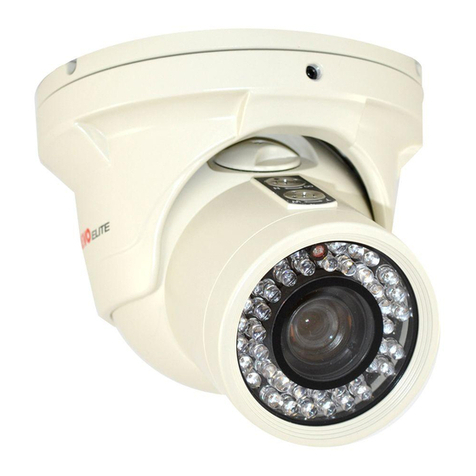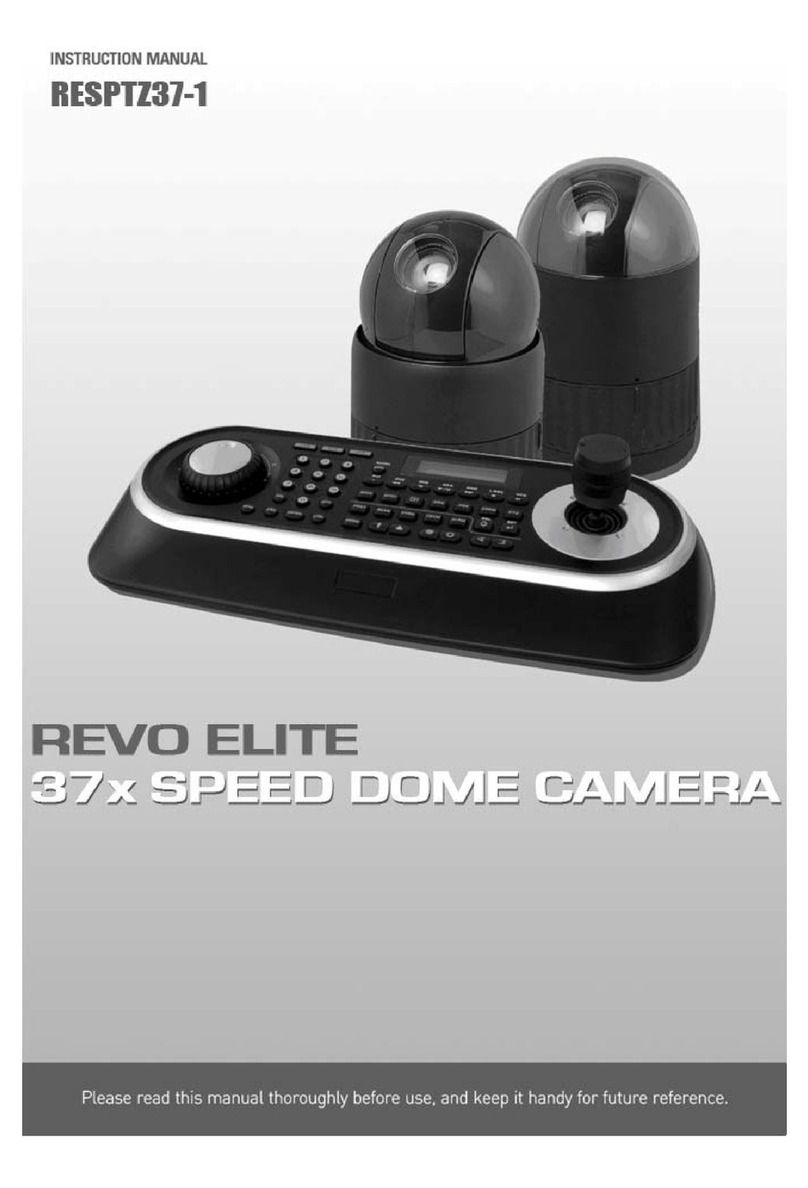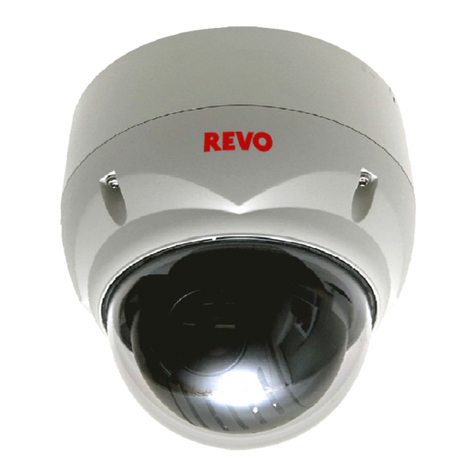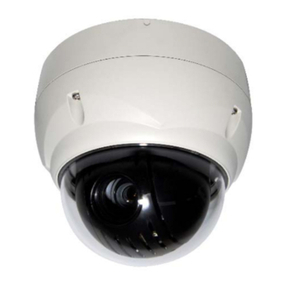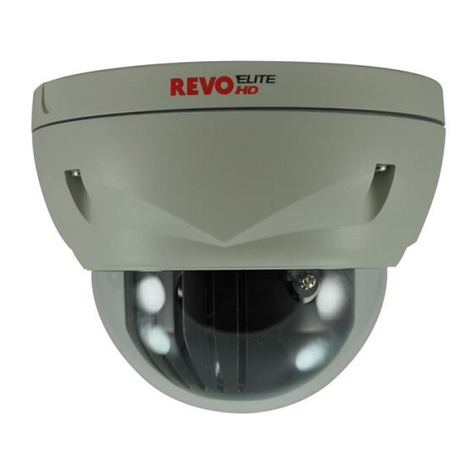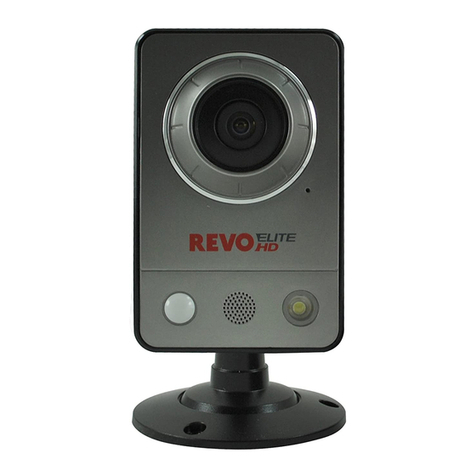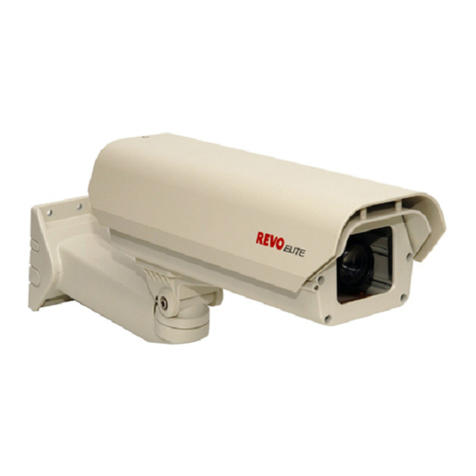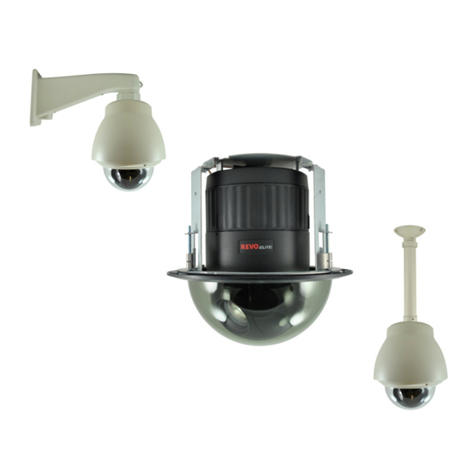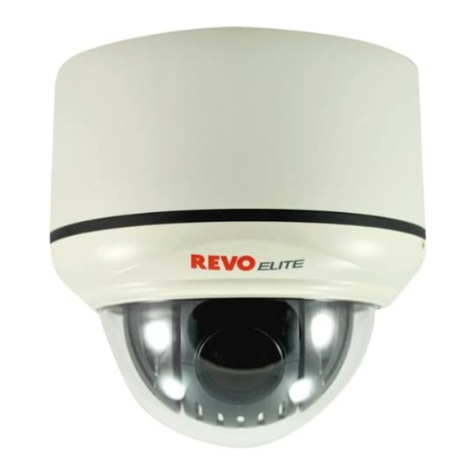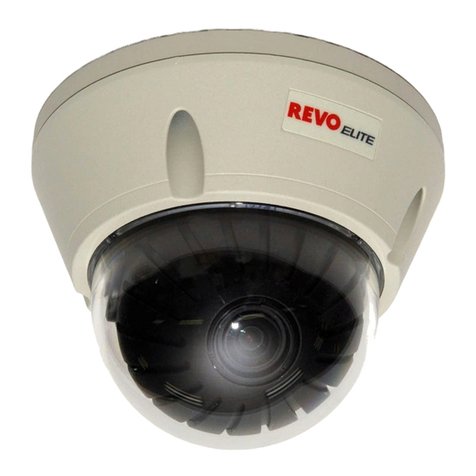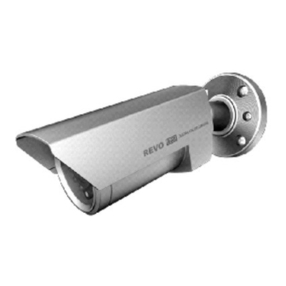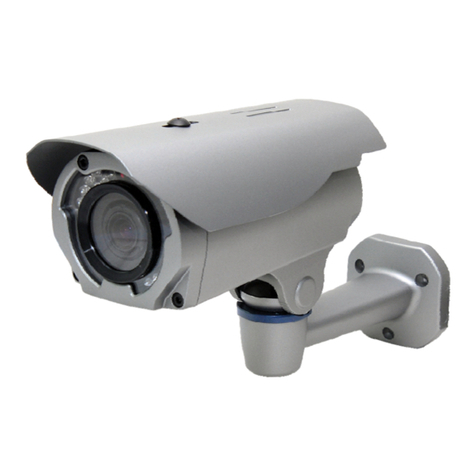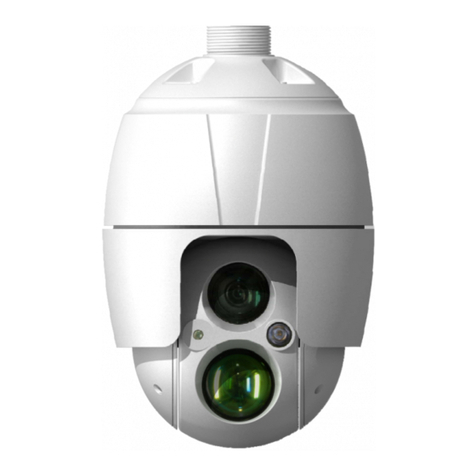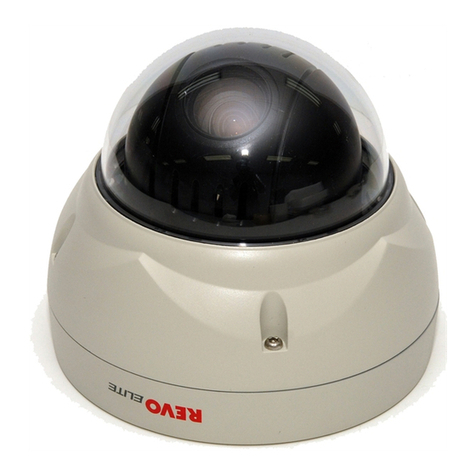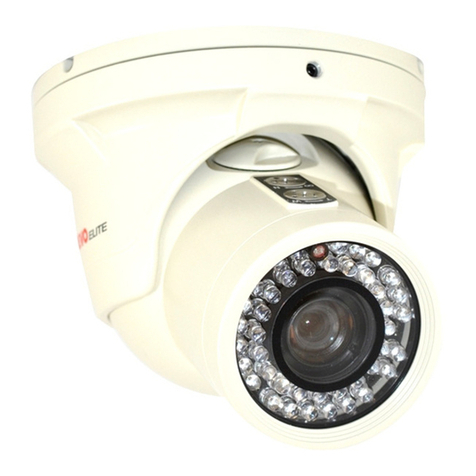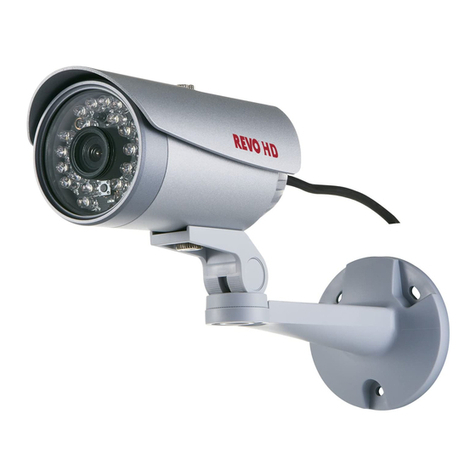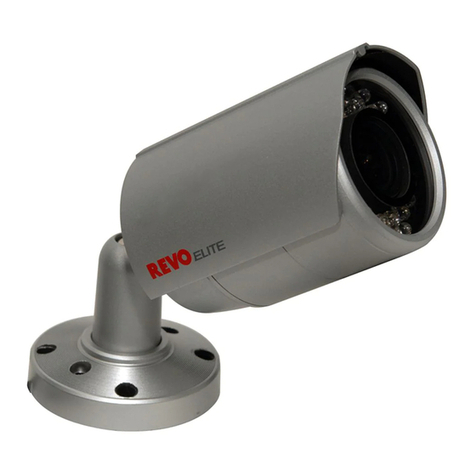7
6. Function Numbers
Function Set/Call (Store/Retrieve):
A preset point (“Preset”) is a memorized pan/tilt camera position.
Many presets can be set (created) and then called (retrieved) easily
to avoid having to use a mouse or joystick to move the camera
precisely to a desired view.
The camera supports a maximum of 212 presets.
The method to set and call presets will depend on the method of
camera control (for example, REVO Remote Pro on a PC, REVO
Mobile on a mobile device, direct DVR control or control via a
joystick keyboard.) Refer to the user’s documentation for the
controlling device. In general, the preset number (which is stored in
the camera) and the function (set or call) will be supplied to the
camera using the controlling device.
To set (create) a preset position, first move the camera’s pan axis
and tilt axis to the desired view, then use the controller’s preset “set”
command and the desired preset number. The view will be stored in
the camera.
To call (view) a preset position, use the controller’s preset “call”
command and the desired preset number to tell the camera to move
to the previously stored view.
For example, if the REVO Mini Keyboard is being used to control the
camera, “set” and “call” can be performed by doing the following:
A “set” command can be made by inputting the desired function
number on the keyboard, then pressing the “PRESET” button.
A “call” command can be made by inputting the desired function
number on the keyboard, then pressing and holding the “SHIFT”
button, then pressing the “PRESET” button, and then releasing
both buttons at the same time.
NOTE: Not all function numbers are used to store preset
(camera view) positions. Some function numbers are used for
special camera functions. Please refer to the following chart.
